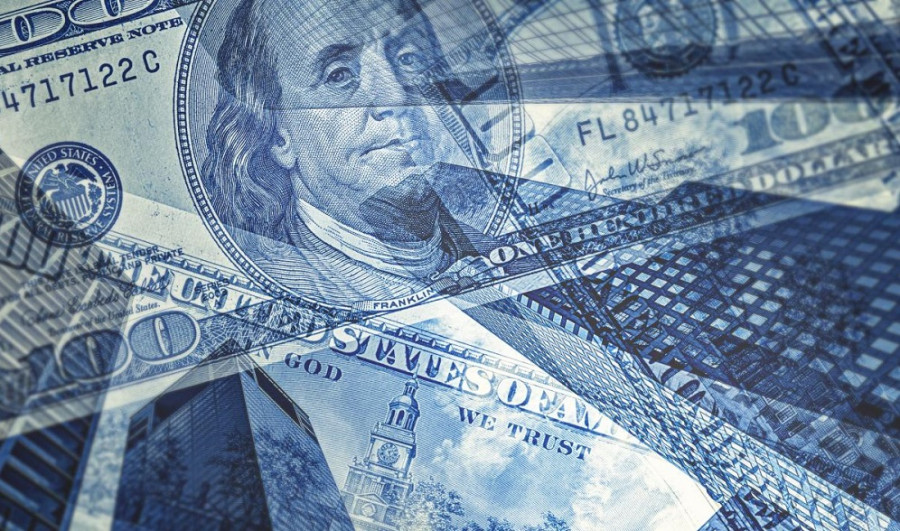
EUR/USD traders were trying to develop a bullish correction on Monday after an extended multi-week decline, which peaked at the 1.0846 mark. As part of the correction, the pair managed to return to the area of the 9th figure for several hours. However, the prospects for developing an uptrend seems rather vague. The pair is mostly growing because the greenback is getting weaker: the US dollar index was under pressure on Monday, amid an almost empty economic calendar.

In general, there are no reasons for the situation to shift in favor of a bullish scenario. It can be assumed that dollar bulls responded in this way to the People's Bank of China's latest decision on interest rates. Although, in my opinion, the half-hearted nature of the PBoC's actions is quite surprising, and in this context, this surprise does not have a positive connotation. All other fundamental factors (including "Chinese" ones) tend to favor the US dollar. Therefore, one should approach the current corrective growth with great caution – the temporary (and rather modest) price surge is more of a technical nature.
However, the upward pullback of EUR/USD did not come out of nowhere - there is a good reason for it. The bulls gained support from the monthly report of the Bundesbank. In its latest report, Bundesbank's experts said that "inflation rates will nonetheless persist for longer above the rates targeted by central banks,". "In particular, the ongoing high wage pressures could make it harder to press ahead with curbing inflation," the publication further read. Typically, the monthly reports of the Bundesbank are ignored by EUR/USD traders, but in the absence of influential reports, the German report was enough to stir some reaction.
And yet, the main driver of Monday's correction was the dollar, which retreated to the base of the 103rd figure after several days of growth last week. We can assume that the greenback reacted to the PBoC's action. China was forced to lower interest rates and stimulate demand after a series of disappointing economic data. For example, July retail sales and industrial output in China deteriorated significantly. In particular, retail sales in China increased by 2.5% in July (year-on-year), while most experts forecasted a growth of 4.8%. In June, sales volume grew by 3.1% (a downtrend). Industrial output increased by 3.7% year-on-year. This indicator also came out in the "red", as the forecast was at 4.5%. Here too, we see a downtrend (industrial production increased by 4.4% in June).
The fire was further fueled by an extensive article in The Wall Street Journal, which essentially argues that China's economic growth, which has lasted almost 40 years and made the country one of the world's largest economies, "has come to an end." Journalists point out that, according to recent data, production volume in China has decreased, exports have decreased, "and youth unemployment has reached a record high." Moreover, according to the article, Beijing is running out of opportunities to expand infrastructure, "and returns on investment have sharply declined."
Such a pessimistic picture, vividly outlined by WSJ journalists, does not add optimism to market participants, especially since the article is backed by negative economic reports from China. There's no talk of an increase in demand for risky assets against this backdrop. As already mentioned, the PBoC raises more questions than answers. The central bank lowered the benchmark lending rate, but contrary to market expectations, left the 5-year mortgage rate unchanged, despite the crisis in the real estate sector. This half-hearted decision disappointed many experts. Specifically, Citigroup economists, following the PBoC's announcement, lowered their annual forecast for China's economic growth to 4.7%, citing disappointment with the policy of the Chinese central bank. Take note that the 4.7% target is even lower than China's official target of "about 5%."
Such a fundamental backdrop is a priori not conducive to the development of an upward movement. Especially since many other factors favor the greenback, ahead of the economic symposium in Jackson Hole, which starts on June 24th. This includes the acceleration of some inflation indicators, strong data in the U.S. retail sector, industrial production, and the labor market.
In other words, the current increase of EUR/USD is corrective, and therefore temporary, so it should not be trusted. From the current positions, it is appropriate to consider short positions with the first, and for now the main target of 1.0850 - this is the lower line of the Bollinger Bands indicator on the daily chart.